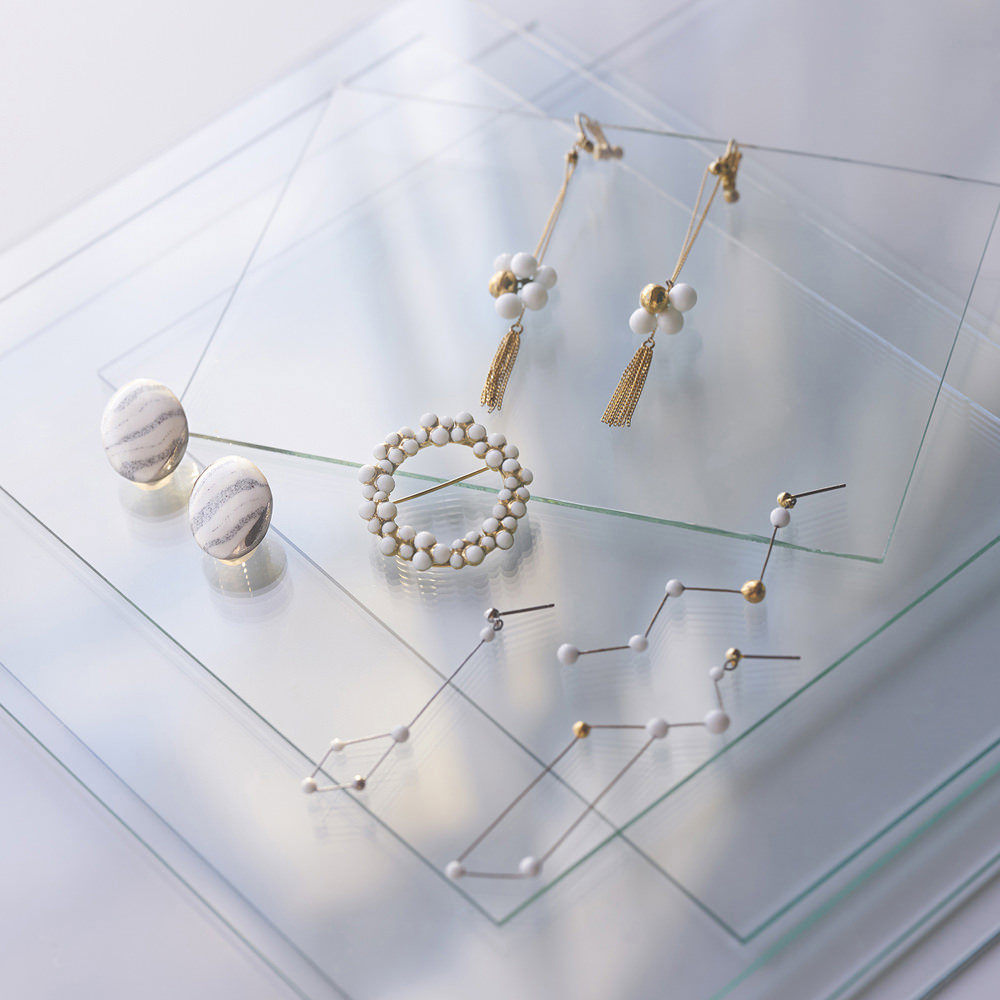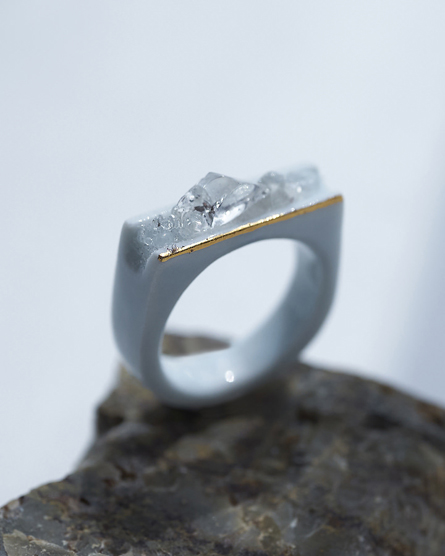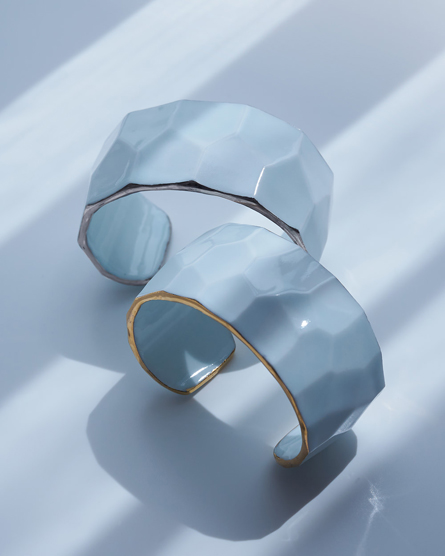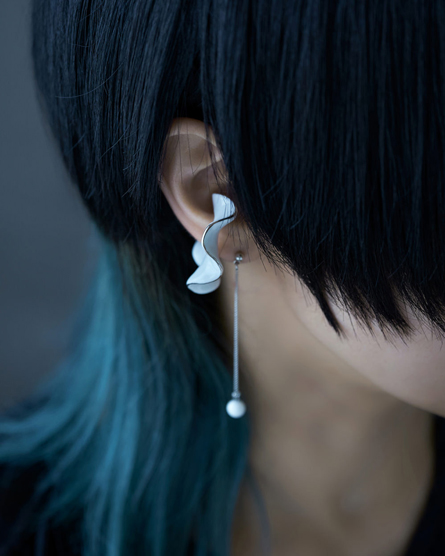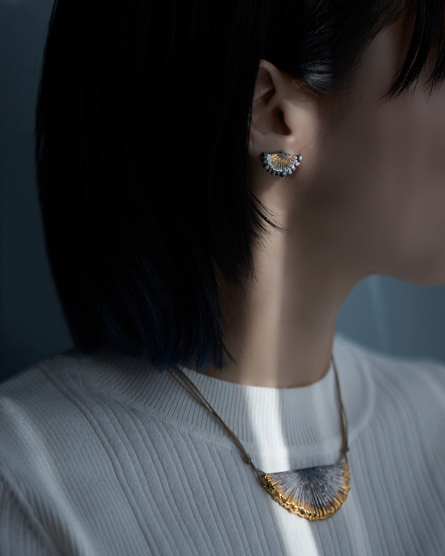私が使うのは陶磁(ceramic)で、原料は陶石という白い石です。
宝石と同じように、原石を掘り出して砕いて取り出します。
私が使うのは陶磁(ceramic)で、原料は陶石という白い石です。宝石と同じように、原石を掘り出して砕いて取り出します。
つまり、どちらも同じ地球のひとかけら。
例えば宝石は、そこから割って削って研磨して…と、マイナスの力で洗練されていきます。
一方、陶石は粉状になるまで挽いて、水を加えて粘土状にして、人の手で成形し、釉を掛け、
窯で焼成し、上絵を施すなど、つまりプラスの力で洗練されます。
自由な形をつくる事ができて、釉薬も試しきれない程の沢山の種類が存在する上に、
自作の釉薬を作るという選択肢も残されています。
一方、陶石は粉状になるまで挽いて、水を加えて粘土状にして、人の手で成形し、釉を掛け、窯で焼成し、上絵を施すなど、つまりプラスの力で洗練されます。自由な形をつくる事ができて、釉薬も試しきれない程の沢山の種類が存在する上に、自作の釉薬を作るという選択肢も残されています。
「陶磁」という素材には(art)というプラスの力で広がる可能性が無限にあると思うのです。
I use ceramics, and the raw material is a white stone called ceramic stone. Like gemstones, I dig out the rough stone, crush it, and extract it. In other words, they are both pieces of the same earth.
Jewelry, for example, is refined by the negative force of breaking, grinding, polishing, and so on. On the other hand, ceramic stone is ground to a powder, watered to form clay, shaped by hand, glazed, fired in a kiln, and painted on, in other words, refined by positive forces. The pottery can be made in any shape, and there are so many types of glazes that it is impossible to try them all, leaving the option of making your own glaze.
I believe that the material of "ceramics" has infinite possibilities that can be expanded by the positive power of art.
